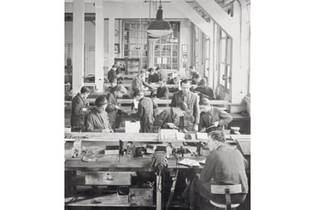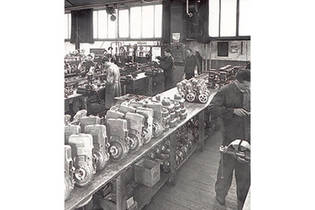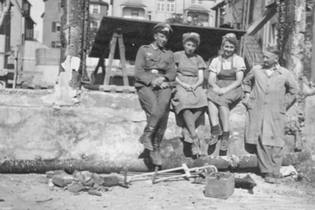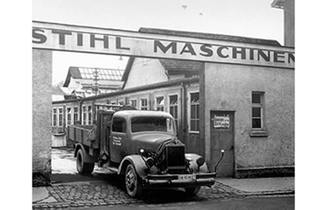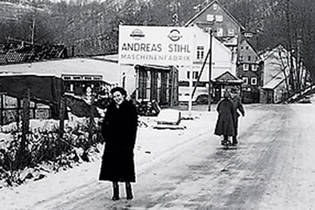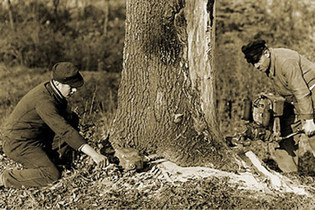STIHL sets up an apprenticeship division with a training workshop. Thanks to in-house training, the employees are tied to STIHL from the outset.
1940 - 1949
Company history
Despite conscription and frequent air raids, production continues to increase. Together with other companies, STIHL is commissioned to produce the KS 43 standard chainsaw for the forestry authorities and the German Armed Forces.
During the bombing of Stuttgart, the STIHL plant in Cannstatt is severely damaged. The entire production facilities are relocated to Neustadt (Waiblingen).
CEO Andreas Stihl is temporarily detained by the allies at the end of World War II. Rebuilding of the company that has been placed under trust management begins with only 80 employees remaining.
Product history
The blower, tank and carburettor housing on the KS 43 “power saw” (8 hp, 36 kg) are made of especially lightweight magnesium die cast material.
The STIHL forwarder is powered by an air-cooled two-stroke diesel engine produced in-house. Until 1963, the production of the utility vehicle for agricultural and forestry use, which makes a place for itself among the leading brands from major companies, proves that STIHL can build far more than just chainsaws.

